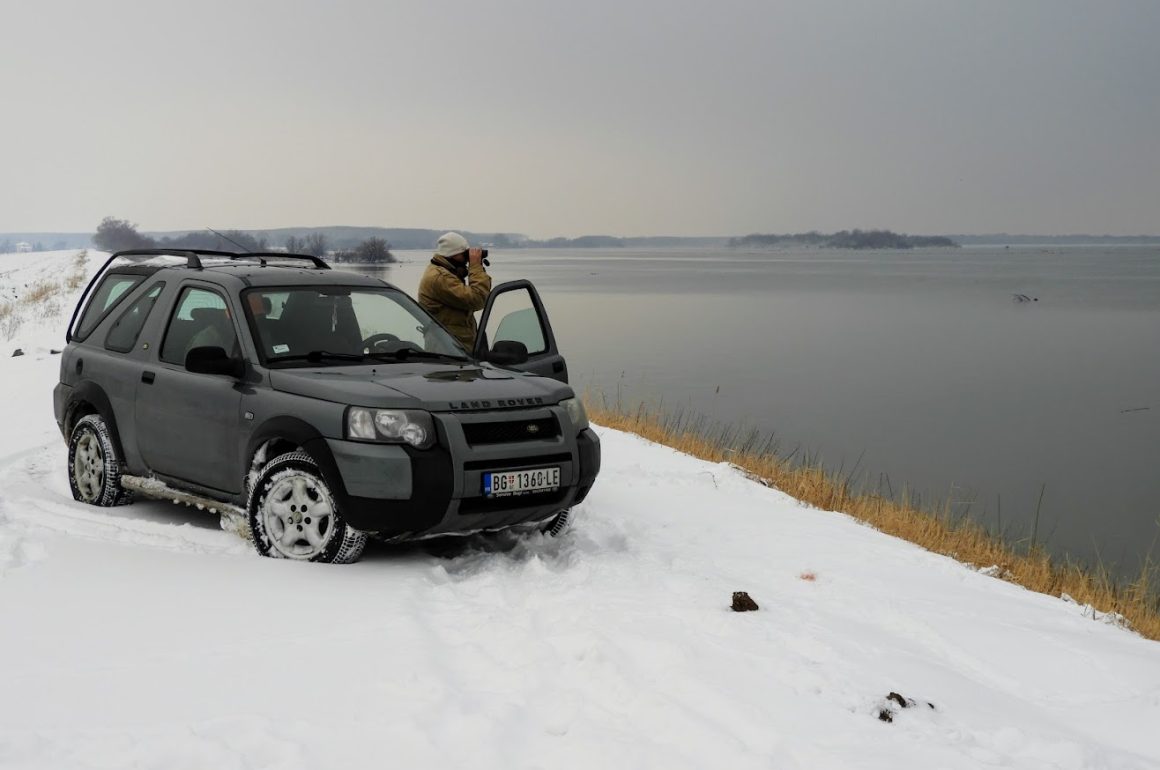
I remember studying the map of countries participating in the international mid-winter waterbird census, where the USA wasn’t marked. How can it be, I asked someone from the Wetlands International, the IWC umbrella organization, only to learn that USA has its own scheme. Oh, and what is that? The Christmas Bird Count was the answer.
The IWC census starts from mid-January following the logic that it is the period when the birds have reached their wintering grounds and are rather static, so the chance of double-counting the same flock is minimal. Of course, the CBC has sexier abbreviation: with the IWC (or iWC?) words “international water closet” come to mind. My mind, at least.
Same as with CBC, the IWC is a lot of fun to participate in but hell to fill in the reporting forms afterwards. (Considering how much I hate forms, eBird must have hired some psychologists to make theirs as smooth as possible – I don’t consider birding finished before the data is entered into eBird. And I do not use the app because I wear reading glasses and would have to put them on and off all the time.)
The other day I counted my favourite section of the Danube River, the wide and shallow Labudovo okno Ramsar site in Serbia. There were eight to ten inches of snow in the countryside. The temperature stayed below freezing all day and the air was chill, but when counting from a cocoon of a car, still not too chill.
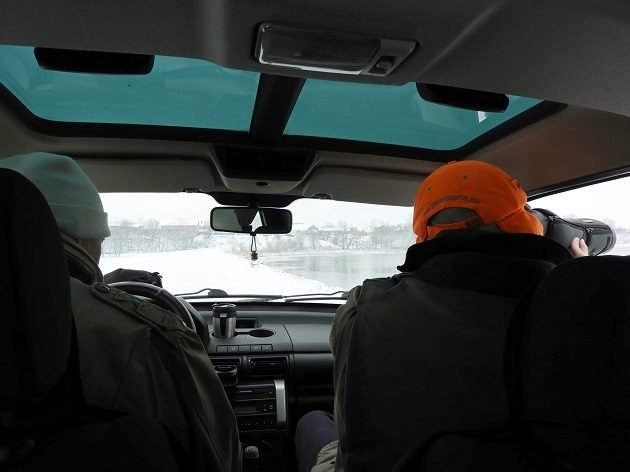
What a great day it turned out to be, starting with one good bird and ending with an Arctic rarity with only 5 records for the country. The first of many Crested Larks greeted us by the roadside in a snow-clad agricultural landscape. Should we drive slowly to be sure to ID those small skulkers or go faster because the day is short? But it is so frustrating to pass the birds by without IDing them!
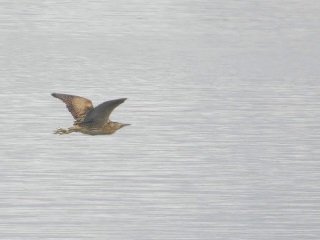 We started some 110 km down the river from Belgrade, heading upstream from the Silver Lake Resort. The local river arm was almost completely frozen. A Great Egret, a few Pygmy Cormorants and, by the middle of the Danube, about a hundred Greylag Geese. Two hundred yards further, the first Common Goldeneye and Smew started to appear and, while counting Smew and geese, a Great Bittern took flight from one stand of reeds to another, right in front of us. It is not an uncommon bird, but being so secretive, I see it only every other year. And the day had just begun.
We started some 110 km down the river from Belgrade, heading upstream from the Silver Lake Resort. The local river arm was almost completely frozen. A Great Egret, a few Pygmy Cormorants and, by the middle of the Danube, about a hundred Greylag Geese. Two hundred yards further, the first Common Goldeneye and Smew started to appear and, while counting Smew and geese, a Great Bittern took flight from one stand of reeds to another, right in front of us. It is not an uncommon bird, but being so secretive, I see it only every other year. And the day had just begun.
Snow covered tree-crowns and bushes in a summer-cottage garden bring Long-tailed Tits (shaped and sized pretty much like flying teaspoons), diminutive Eurasian Wren, adorable Goldcrest and several wintering Bramblings foraging on ash seeds. Oddly, no Fieldfares anywhere, they are nowhere to be seen this winter.
A hundred Smew and a thousand geese later, through the gently rolling hills we head for the Labudovo okno, by one Great Grey Shrike and several more Crested Larks. Traditional farming landscape of small holdings, hedges and groves draped in snow… I actually hate snow, but on days like this, cannot resist it. Leaving the village behind, we entered a former flood plain, now cut off by the levees, which were our target areas for the day.

One thousand Greylags in the field by the road and bushes alive with Eurasian Linnets, Yellowhammers and Reed Buntings. Passing the last poplar plantation and… deep snow with no tire tracks. To dare birding that section or to skip it? We decide to try. There weren’t many birds, but being the first people to leave our tire marks in the fresh snow brings back childhood memories of being the first kids to leave our sledge marks…
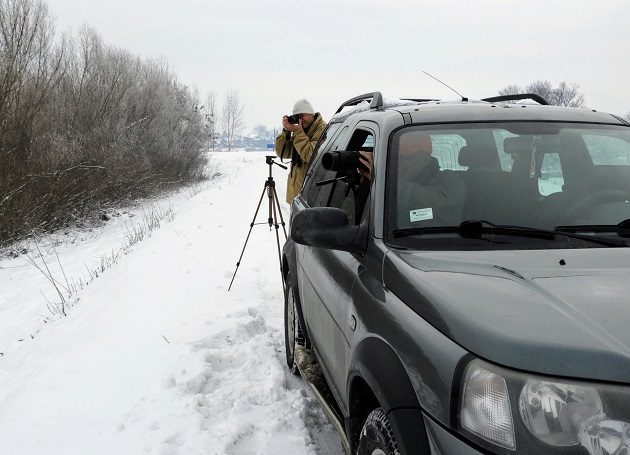
Further on, half a dozen Greater White-fronted Geese flew above us. They were very scarce, less than ten per cent (or less) of all geese, something I never saw before. Normally, two thirds of all geese are White-fronted and one third Greylag.
One odd flock of Feral Pigeons above an arable field under deep snow – nothing for them to eat there, but I didn’t give them the attention they deserve and only a few hours later realised that they actually were Stock Doves. And I didn’t pay enough attention because one very dark eagle flew by at the same time, an adult Greater Spotted Eagle. These globally threatened raptors breed from Ukraine eastward through Siberia and only a few come to overwinter here. The biggest count ever was less than 10 birds in the whole of Serbia. And this one chose to fly right in front of us.
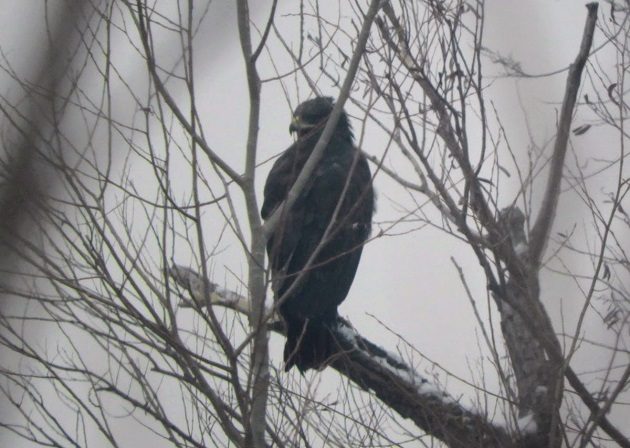
Two hundred yards further, we found another Greater Spotted Eagle! Two! From there on, we waited for geese to settle for the night, this time only a few thousand, as opposed to tens of thousands two winters ago (here) when the river was frozen solid.
Several poachers were waiting in ever thickening darkness (Serbian legislation forbids night hunting). A whitish mist was enveloping the geese as the night grew dark, and it made no sense to stay any longer, hence we retraced our tracks in the snow… stop! Startled by our headlights, a goose was sitting in the tire trail. But this wasn’t a Greylag nor a White-fronted, we almost ran over a Barnacle Goose – a rarity I mentioned earlier.
Barnacle geese breed mainly on the Arctic islands of the North Atlantic, while the nearest wintering areas also lie along the northern coasts of Europe: the Netherlands and the Baltic Sea (Estonia, Finland, Denmark and Sweden). Here in Serbia, in the south of the continent, this species is a proper rarity. Yet, in the early 19th century it seems to have been a regular species overwintering alongside other geese, but after 1840s, the next birds were recorded only in 1955. There are 5 published records since mid-20th century, the last one of six birds in 2006.
The startled bird was looking at us. We expected it to take flight, but she remained frozen. The first idea was, it is probably wounded by poachers. The ABS braking system even prolonged our tire marks in the snow and only when we though “gosh! we will kill it!”, the Barnacle Goose took flight.
This entire observation lasted perhaps three to four seconds, yet it left us laughing euphorically and uncontrollably. The last bird of the day was a lifer for all three of us.
Photos (6) by Miroslav Mares













Leave a Comment